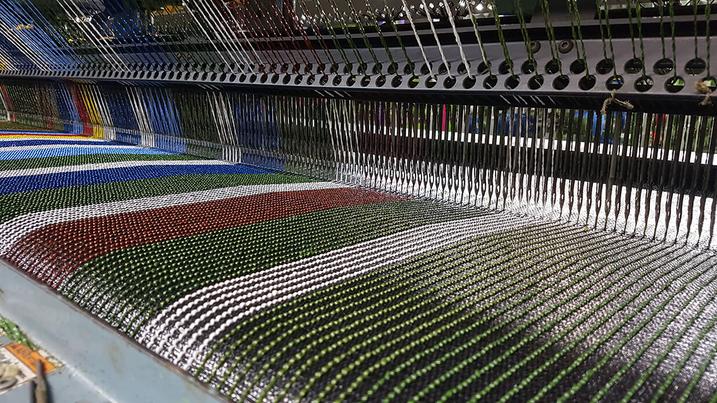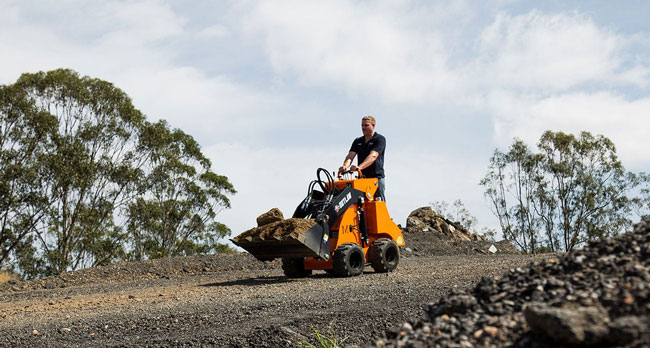- Receive 15% off your backyard makeover - claim my discount now
Home / How To Clean Fake Lawn for a Stunning Yard


Synthetic grass has become increasingly popular as a low-maintenance alternative to natural grass lawn. With its ability to withstand various weather conditions and its minimal upkeep requirements, it’s no wonder that many homeowners are opting for synthetic turf.
But like any outdoor surface, artificial grass still requires regular cleaning and maintenance to keep it looking its best.
This comprehensive guide will walk you through the step-by-step process of cleaning and maintaining your synthetic grass, ensuring that your yard remains stunning year-round.
Before we delve into how to clean and maintain your artificial grass, let’s take a look at why it’s crucial to keep up with regular upkeep in the first place. Trust us, doing this is always worth the extra effort.
While synthetic grass requires significantly less maintenance than natural grass, neglecting proper cleaning can lead to dirt, debris, and even bacteria buildup. Regular cleaning keeps your artificial turf looking fresh and vibrant and helps ensure its longevity and functionality.
Proper maintenance will also help prevent odours and maintain a healthy environment, especially if your pets or children frequently use your yard.
You’ll need to gather a few essential supplies to clean artificial grass effectively. These items will make the cleaning process more efficient and ensure you have everything you need to achieve optimal results.
Here’s what we recommend you stock up on:
| Supplies | Description |
| Gloves | Protect your hands during the cleaning process. |
| Stiff Broom or Lawn Rake | Use a broom or rake with stiff bristles to remove debris and keep the grass blades upright. |
| Garden Hose | Provide a water source for rinsing your artificial grass. |
| Spray Bottle | Use a spray bottle for spot treatments and apply cleaning solutions. |
| Non-toxic Cleaner | Choose a non-toxic cleaner specifically designed for synthetic grass. |
| Granular Detergent | Use a granular detergent for stubborn stains or spills. |
| Cloth or Sponge | Use a cloth or sponge to apply cleaning solutions and scrub stains. |
| Extra Infill | If necessary, have extra infill material, such as silica sand or rubber granules, on hand to replenish your turf’s infill layer. This is not mandatory. |
| Knife | Keep a knife handy for removing sticky substances or dislodging debris. |
| Leaf Blower (optional) | Use a blower to remove larger debris like leaves and sticks. |
The first step in cleaning your artificial grass is removing any accumulated surface debris. This includes leaves, sticks, dirt, and other loose particles. You can use a leaf blower or a stiff broom to accomplish this task.
If you have a leaf blower, it can offer a quick and efficient way to clear your artificial grass of debris. Start by setting your blower to a moderate setting to avoid damaging the grass blades.
Begin in one corner of your yard and work your way across, directing the airflow towards a designated area where you can easily collect the debris for disposal. Be sure to pay extra attention to corners and tight spaces where debris may accumulate.
A leaf blower can help you swiftly and effectively remove larger debris, leaving your artificial grass clean and ready for further maintenance.
If you don’t have access to a leaf blower, you can achieve similar results using a stiff broom or synthetic lawn rake. Start by gently sweeping the debris towards a designated area, such as a yard corner or a tarp, for easy disposal.
Be careful not to apply too much pressure or use a broom with metal bristles, which can damage the grass fibres. Instead, opt for a broom or rake with stiff but non-abrasive bristles.
After removing the larger debris, it’s time to maintain artificial grass by giving it a thorough rinse.
Rinsing helps remove fine particles, dust, and any remaining loose debris that may have been missed during the initial cleaning. This step maintains the fresh and vibrant appearance of your artificial grass.
Attach a hose to a water source and gently spray the entire surface of your artificial grass. Use light water pressure to avoid damaging the turf.
Start from one end of your yard and move systematically to cover the entire area evenly. The water will help remove any remaining dirt and debris, leaving your artificial grass clean and rejuvenated.
Even with regular maintenance, occasional spills and stains may occur on your artificial grass. Whether it’s a pet accident or a spilled beverage, addressing these stains promptly prevents long-term damage or odours.
A mixture of warm water and mild soap or dishwashing detergent can be highly effective for small spills and stains. Start by blotting any excess liquid or solid waste using a cloth or paper towel.
Then, mix warm water and a small amount of mild soap in a spray bottle or bucket. Apply the solution to the stained area and gently scrub with a cloth or sponge. Rinse the area thoroughly with clean water to remove any soap residue.
Finally, use a cloth or paper towel to dry the spot. This method is suitable for most spills and stains and can help restore the appearance of your artificial grass.
You may need to use additional cleaning agents for stubborn stains resistant to the mild soap and water method. Here are a few options some artificial grass cleaners use for tackling stains on your artificial grass:
Always test any cleaning solution on a small, inconspicuous area of your artificial grass before applying it to a larger stain. This will ensure that the solution does not cause any damage or discolouration to your turf.
Occasionally, sticky substances like chewing gum, tree sap, or other adhesives may get stuck to your artificial grass. Promptly removing these substances is important to maintain the cleanliness and appearance of your turf.
Here’s how you can effectively remove sticky substances and residue from your artificial grass:
Start by wetting the affected area with a hose to loosen the sticky substance. Once the area is wet, apply a mild cleaner or a half-and-half mix of white vinegar and water directly to the sticky substance. Allow the cleaner or vinegar solution to dissolve the sticky residue for a few minutes.
After letting the cleaner or vinegar solution sit, gently scrub the area with a bristle brush. Be careful not to scrub too harshly, as this can damage the grass blades.
Rinse the area thoroughly with clean water to remove any remaining residue. Repeat the process if necessary until the sticky substance is completely removed.
For pet owners, properly cleaning and deodorising pet waste from artificial grass is essential to maintaining a clean and odour-free yard. Follow these steps to clean pet waste from your synthetic turf effectively:
When you notice solid pet waste on your artificial grass, use a scooper or a bag to pick it up and dispose of it in a proper waste container. Remove solid waste promptly to prevent any bacterial growth or odour development.
After removing the solid waste, thoroughly rinse the affected area with a hose. Avoid using a pressure washer, as it can damage the turf.
You can use a standard household cleaner or a cleaner specifically designed for artificial grass to disinfect the area.
Follow the instructions on the product label and apply the cleaner to the area where your pet relieved themselves. Use a stiff-bristled brush to gently scrub the area gently, ensuring the cleaner reaches all the grass fibres.
Rinse the area again with clean water to remove any residue from the cleaner. Allow the turf to air dry naturally.
To remove pet waste odours, consider incorporating preventive measures into your routine.
Mop up any pet urine accidents using paper towels or wipes as soon as possible. Hose down the area daily or weekly to prevent urine and odour buildup. Don’t let pet waste linger on the turf, especially during hot weather.
Using baking soda every month can help neutralise odours. These simple preventive measures can go a long way towards maintaining a clean and odour-free artificial grass lawn.
Artificial grass often contains an infill material, such as silica sand or rubber granules, that helps provide stability, drainage, and a comfortable surface.
Over time, the infill material may become compacted or dislodged, requiring replenishment. Here’s how you can refresh the infill material on your artificial grass:
Regularly inspect your artificial grass to assess the condition of the infill material. If the infill looks matted, compacted, or thin, it’s time to top it up. Pull back some blades of grass to access the infill layer and determine if additional material is necessary.
If your infill material needs replenishment, you can purchase silica sand or rubber granules specifically designed for artificial grass.
Follow the manufacturer’s instructions for the appropriate amount of infill material based on your turf’s dimensions. Disperse the infill material evenly across the turf using a lawn rake or a stiff broom. Distribute the material thoroughly to achieve an even and well-maintained surface.
Cleaning and maintaining your artificial grass doesn’t have to be a daunting task. With the right supplies, techniques, and regular upkeep, you can ensure that your synthetic turf remains stunning, clean, and odour-free.
Remember, regular cleaning and proactive artificial grass maintenance are essential for your synthetic lawn’s longevity and aesthetic appeal. So, roll up your sleeves, gather your supplies, and start keeping your fake lawn looking fabulous!Looking for more lawn care tips on maintaining a beautiful, natural grass yard? Check out our comprehensive lawn care guide for additional advice on mowing, watering, fertilising, and more!


accepted payments